Golden Retrievers are known as great family pets, but did you know these lovable, friendly pups started out as hunting dogs?
People have had a great impact on both the looks and the personality of dogs, from when they first started living by our side until today.
Prioritizing certain characteristics over others in order to better match our needs has led to the differentiation of show-line and field-bred Golden Retrievers.
However, every dog is unique, so there’s no way to tell exactly what traits they’ll inherit or acquire as they go through life.
Still, there are some general differences between these two types, so let’s see what it takes for a Golden to be considered as field-bred.
History of the breed

One of the most popular dog breeds around the world today, the Golden Retriever wouldn’t have come into existence if not for the efforts of one man and his lucky encounter with a dog deemed as undesirable.
In the 19th century, black sporting dogs were considered to be better hunters, so puppies of other colors were usually disposed of.
That’s why Nous, the only yellow puppy in the litter of black Wavy-Coated retrievers, was given away to a cobbler in the south of England.
He was then purchased by Edward Marjoribanks, also known as Lord Tweedmouth, to join his kennel of sporting dogs.
By breeding Nous to a Tweed Water Spaniel, the first of the yellow puppies that would become the ancestors of today’s yellow Retrievers were born.
Their descendants were combined with wavy- or flat-coated retrievers and red Irish Setters. Lord Tweedmouth primarily kept the yellow puppies to continue his line.
These dogs were used as gundogs, so their working ability was of utmost importance.
We know about their history today because Marjoribanks kept an extensive diary of all his breeding experiments, which is now kept safely in England.
Golden Retrievers were first presented in a dog show in 1906, and were officially recognized by the Kennel Club of England in 1911.
The AKC recognized the breed in 1932, about a decade after they arrived in America, while the Canadian Kennel Club recognized them as being purebred in 1925.
What are the three types of Golden Retrievers?
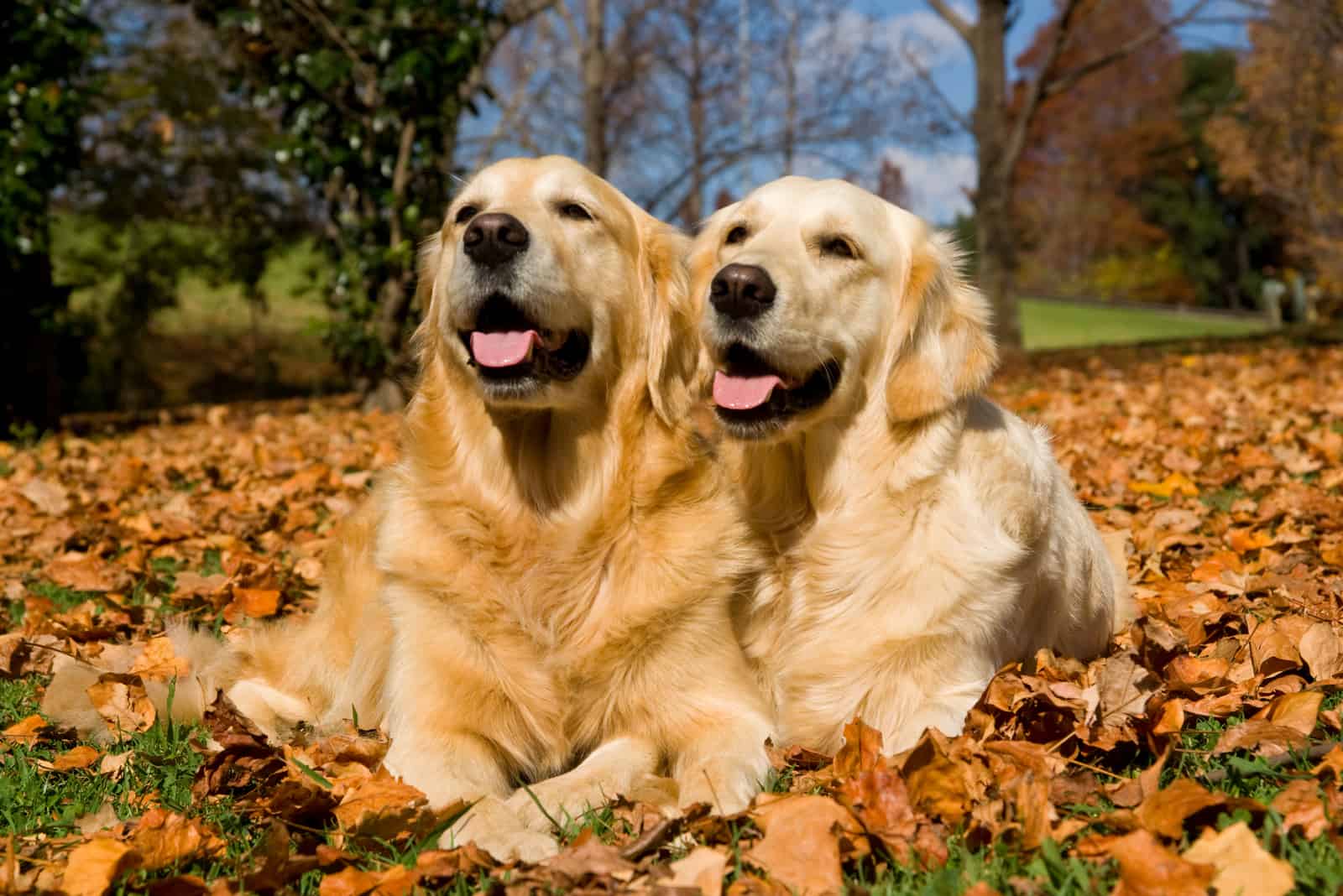
There are three different types of Golden Retrievers based on regional differences:
1. English Golden Retrievers
2. American Golden Retrievers
3. Canadian Golden Retrievers
They don’t differ significantly enough for dog organizations to consider them separate subtypes of the breed. However, there are some dissimilarities between them in terms of size, color, and hair texture.
English and American Goldens are somewhat smaller than the Canadian ones, and the British type has a stronger, more muscular build compared to the other two. For more information on these dogs’ size, check the Golden Retriever growth chart!
The English Golden Retrievers are also lighter in color while the American type is typically dark golden.
The main thing that sets the Canadian Goldens apart from their cousins is their shorter, less feathery coat.
When it comes to personality, all of them are loyal, obedient pups that would do anything for their humans.
The Golden Retriever’s appearance and temperament
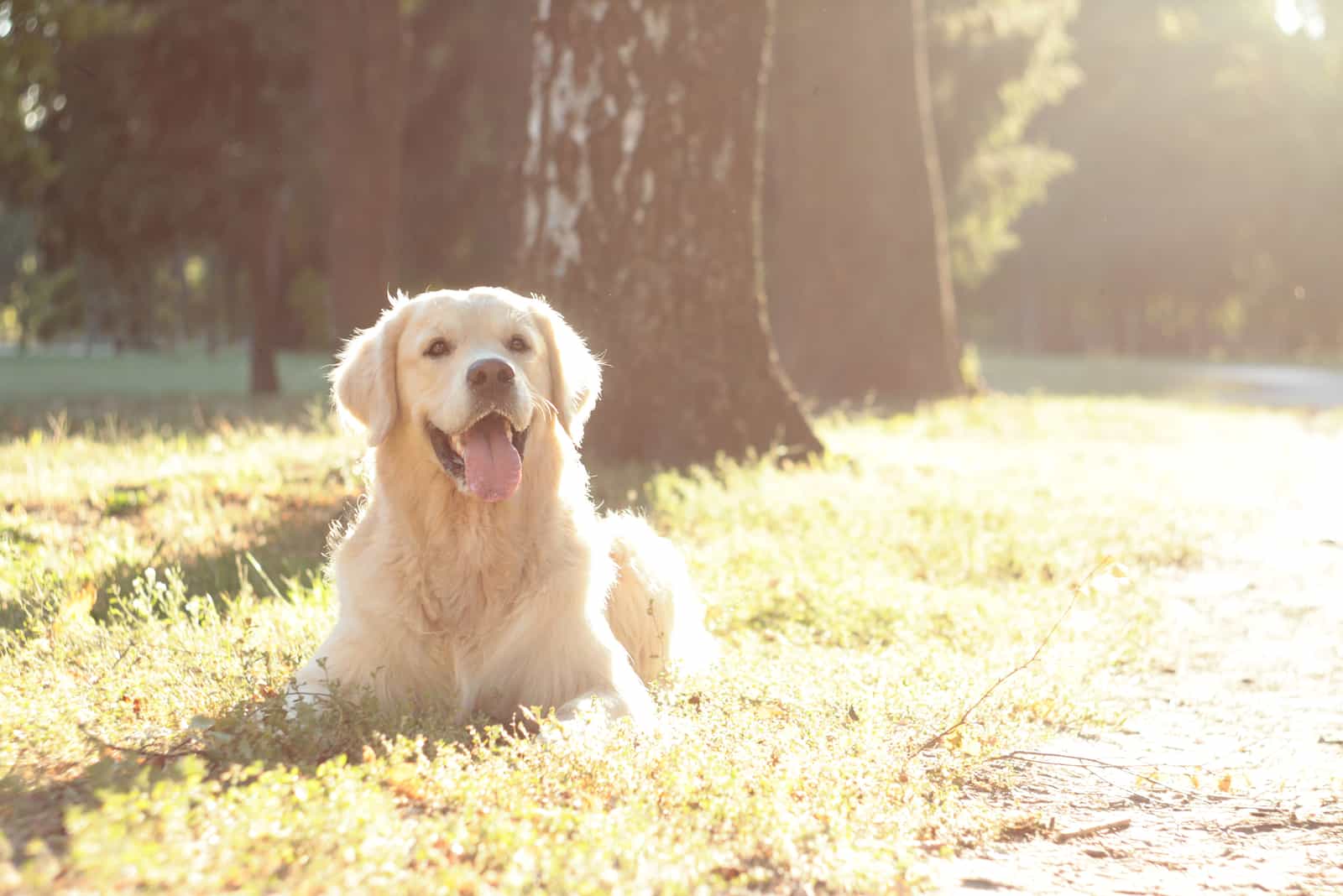
Retrievers are considered to be medium-large dogs. Males typically weigh between 65 and 75 pounds, with a height of 22.5 to 24 inches, while females grow to be 21.5 to 22.5 inches tall, with a weight of 55 to 65 pounds.
Their overall build is strong, and they walk in a smooth, trotting gait.
They’ve got slightly arched, broad skulls that stand on their strong, muscular necks, with no throatiness. Their muzzles are straight and well-proportioned to their heads with teeth closing in a scissor bite.
They usually have friendly, dark brown eyes that help them get away with occasional shenanigans.
Their noses are black, and they’ve got short floppy ears.
Goldens have dense, water-repellent coats that come in various shades of gold. Their hair is medium-length and it can be either straight or wavy.
The AKC describes them as powerful, active dogs with an eager, alert, and self-confident personality.
These friendly pups are laid back, playful, and affectionate, which makes them perfect family companions. Because of their social attitude, they get along with other pets and children.
The intelligence they’ve proved in so many ways is the reason behind their high trainability. They’re always eager to learn new things, which makes the training job quite easy.
They also don’t bark much, which makes them fit for apartment-living. Since they do need lots of exercise, a good outdoor space nearby is always welcome.
Considering all of these characteristics, it’s no wonder these pooches are one of the most popular breeds in the world.
What does field-bred mean?
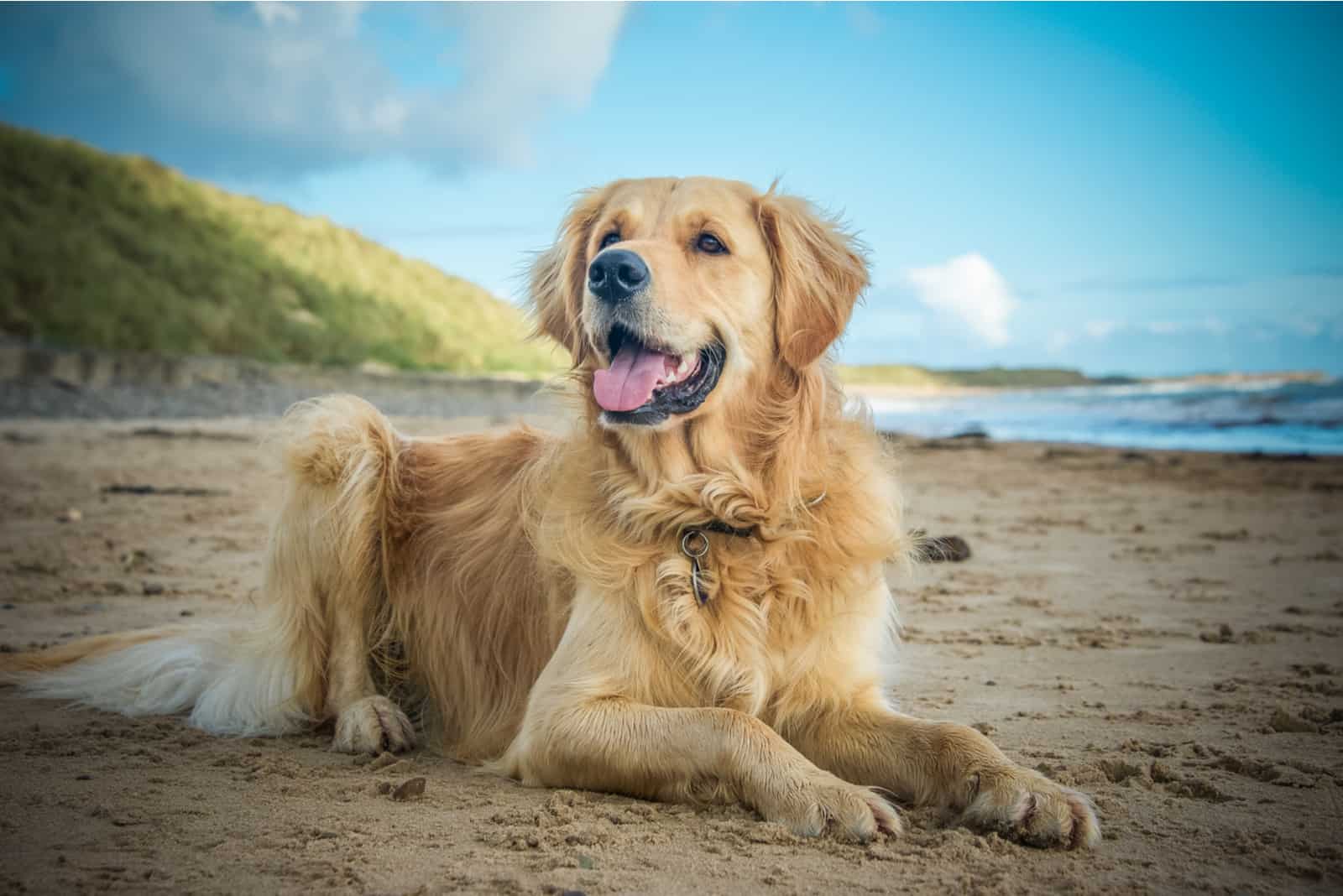
Field-bred dogs are bred for hunting or participating in trial competitions. Breeders only choose dogs with the best traits for the breeding process, similar to the dogs from which a specific breed meant for hunting originated.
This ensures that a good hunting instinct will be preserved throughout the generations of these dogs. Field-bred dogs have physical and personality traits that help them carry out their hunting tasks with ease as opposed to the show-line dogs, which are bred to be more suitable companions.
What is a field Golden Retriever?
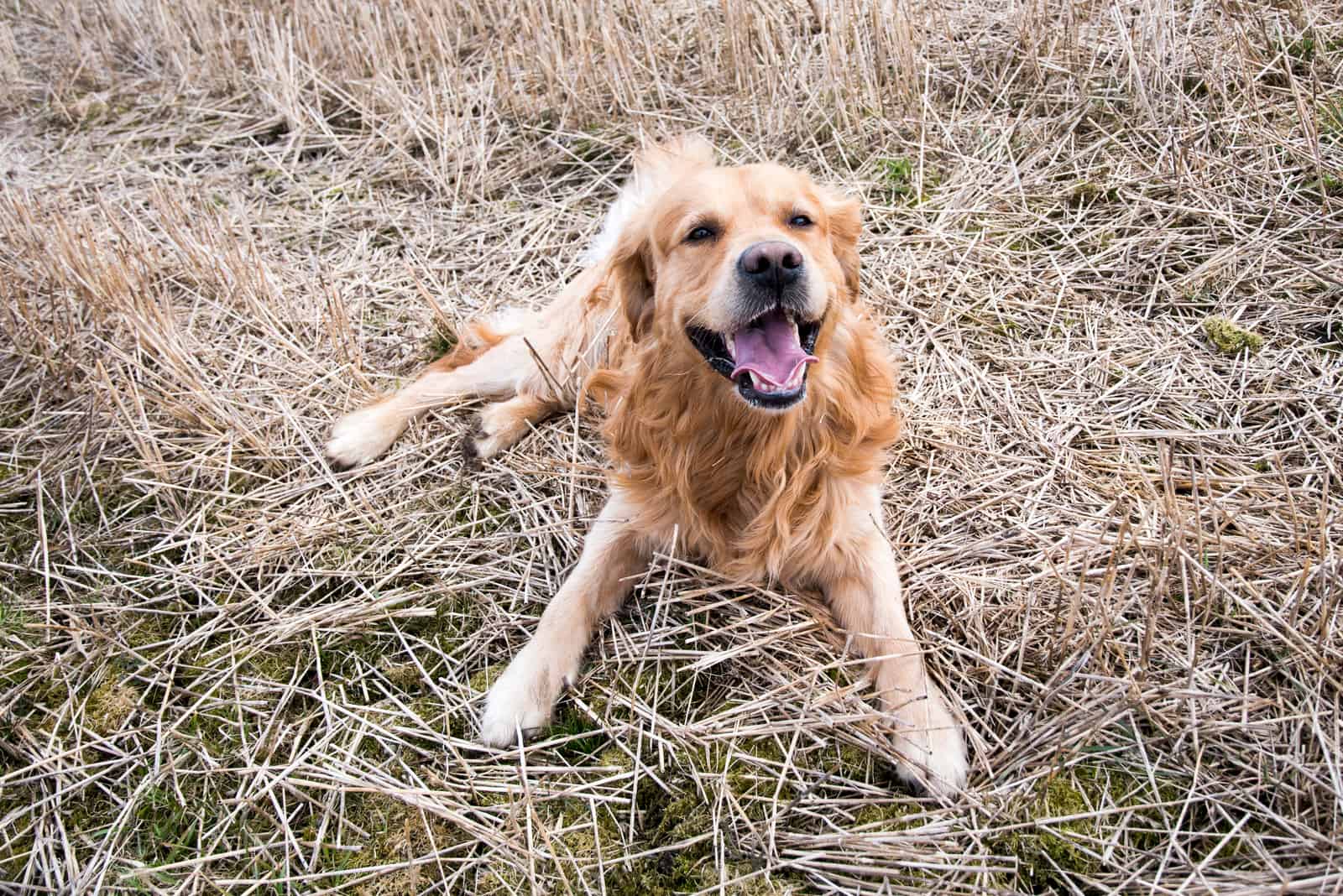
A field Golden Retriever is a variation of the breed that resulted from primarily breeding dogs for their working abilities rather than for their appearance.
When these dogs first came into existence about two hundred years ago, their main purpose was to retrieve shot waterfowl, so the instinct for hunting was prioritized in the breeding process.
This ability, alongside their golden color, is what earned them their name.
As their popularity rose over the years, Goldens started to occupy people’s homes and yards as family dogs instead of hunting partners.
This gave their looks and friendly personality more importance, which led to the differentiation between today’s field-line and show-line Golden Retrievers.
Today, the field dogs come from good breeding programs that ensure the original hunting instinct and fierce character is preserved.
How big to Field Golden Retrievers get?
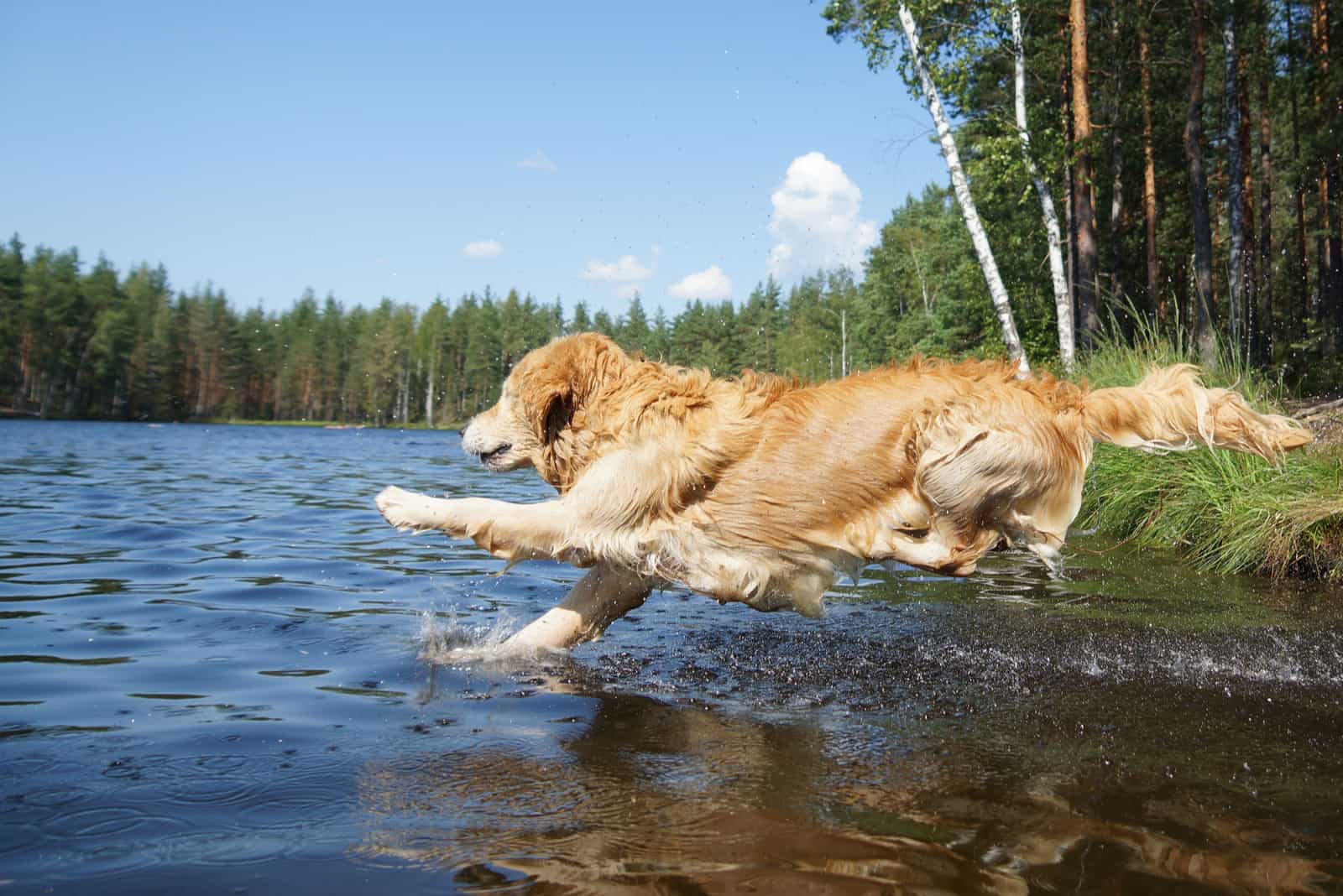
Field Goldens fall on the smaller end of the Golden Retriever size spectrum, which ranges from 65 to 75 pounds for males, and 55 to 65 pounds for females. The height for males can be between 22.5 and 24 inches, while for females, it’s 21.5 to 22.5 inches.
Even though they are smaller than the typical Goldens, field-breds are still considered medium to large dogs.
Their smaller size helps them to be more agile when they’re swimming in water and retrieving shot waterfowl.
What makes them different from show dogs?
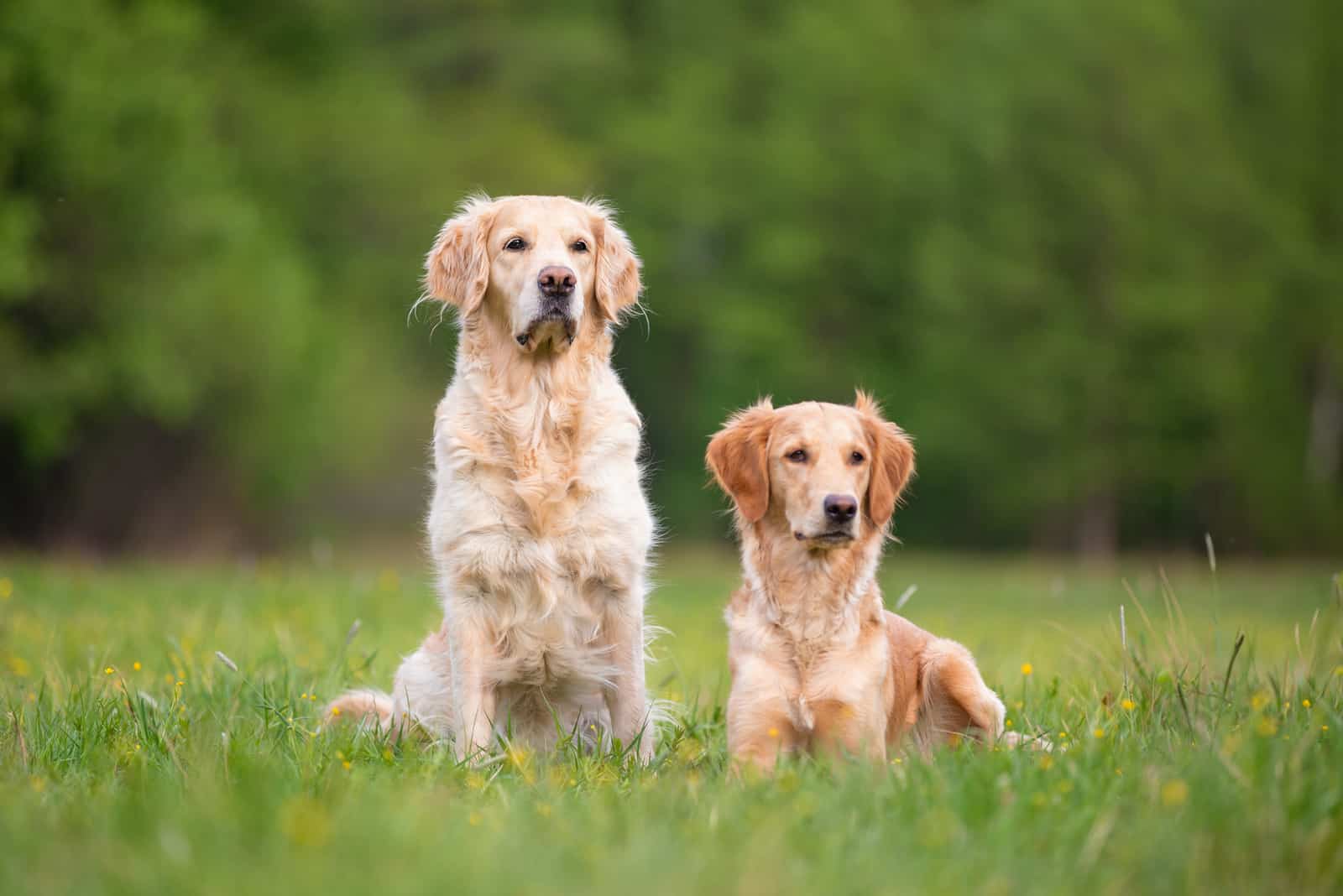
Field dogs are usually smaller in size with a leaner build compared to the conformation dogs. This helps them to be more athletic while carrying out their hunting duties.
The show-type dogs have a more squared head and a fuller tail.
Working-type dogs usually have wavier and shorter coats as opposed to the less dense, flat fur of the show types.
They’re also typically of darker color than their show-line cousins.
A thick undercoat makes them more resistant to the extremely cold water that they need to dive in to retrieve game while their top-coat helps them to be better swimmers. Their coats shouldn’t be too long as it can impact their performance in the field.
These dogs also differ in character. The field dogs tend to be less sociable and gentle. They’re also generally smarter, which certainly doesn’t make show Goldens unintelligent.
Both are easy to train due to their highly obedient nature. They adjust to new circumstances quickly, and most often don’t exhibit any behavioral problems.
There’s no major difference in common health issues that occur in these dogs. Both have an average lifespan of 10 to 12 years. They’re prone to developing cancer, hip and elbow dysplasia, epilepsy, and separation anxiety.
Field-bred Goldens are more suitable for a variety of jobs, and usually do better at different dog sports.
Golden Retrievers as working dogs
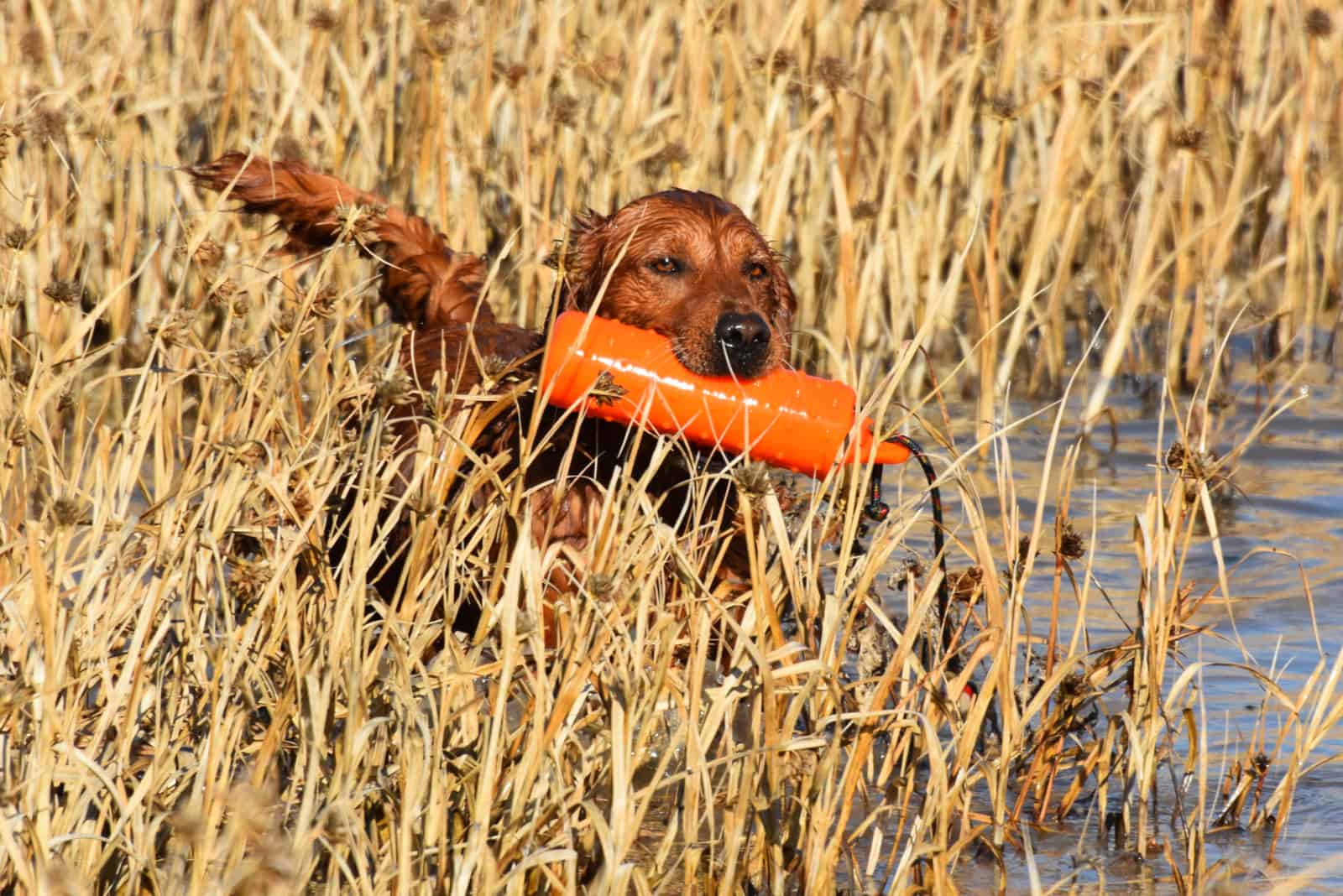
Retrievers were intended to be hunting dogs that specialize in recovering game from bushes, cliffs, or water.
There are a few physical and character traits they possess that make them good at this. The first is their soft mouth, which enables them to retrieve the game in one piece.
Their water-proof coats and great agility are to blame for their love of water, making them excellent swimmers.
Lastly, as highly obedient dogs, they are easily trained to perform a variety of tasks.
The number of hunters has significantly declined from the 19th century until today, but the Goldie’s skills didn’t go to waste. Instead, they were employed as detection dogs, service dogs, guiding dogs for the blind, or in search-and-rescue missions.
Detection dogs use their sense of smell to sniff out particular substances. In law enforcement, their tasks usually consist of detecting illegal drugs, explosives, blood, or human remains. They’re used in health care as well since they can detect cancer and abnormal blood sugar levels.
These dogs can also be of great help to scientists studying wildlife biology as they can be trained to differentiate insects by smell.
A guide dog can’t be too dominant nor too submissive, and they shouldn’t be easily distracted by their surroundings. Goldies possess all of these qualities, plus they’re not too large to handle.
That’s why these calm, composed dogs with a natural work ethic are great companions for the blind, helping them with their daily activities and making their lives easier.
A search-and-rescue dog needs to be intelligent, confident, and obedient, with a high level of endurance and persistence. Golden Retrievers are all of these things, which make them perfect for the job.
As air-scent dogs, they can easily be trained to pick up human scent and locate its origin. That’s why they can be seen helping people on SAR missions in disaster sites around the world, often doing the work of twenty to thirty human rescuers.
Field Goldens in dog sports
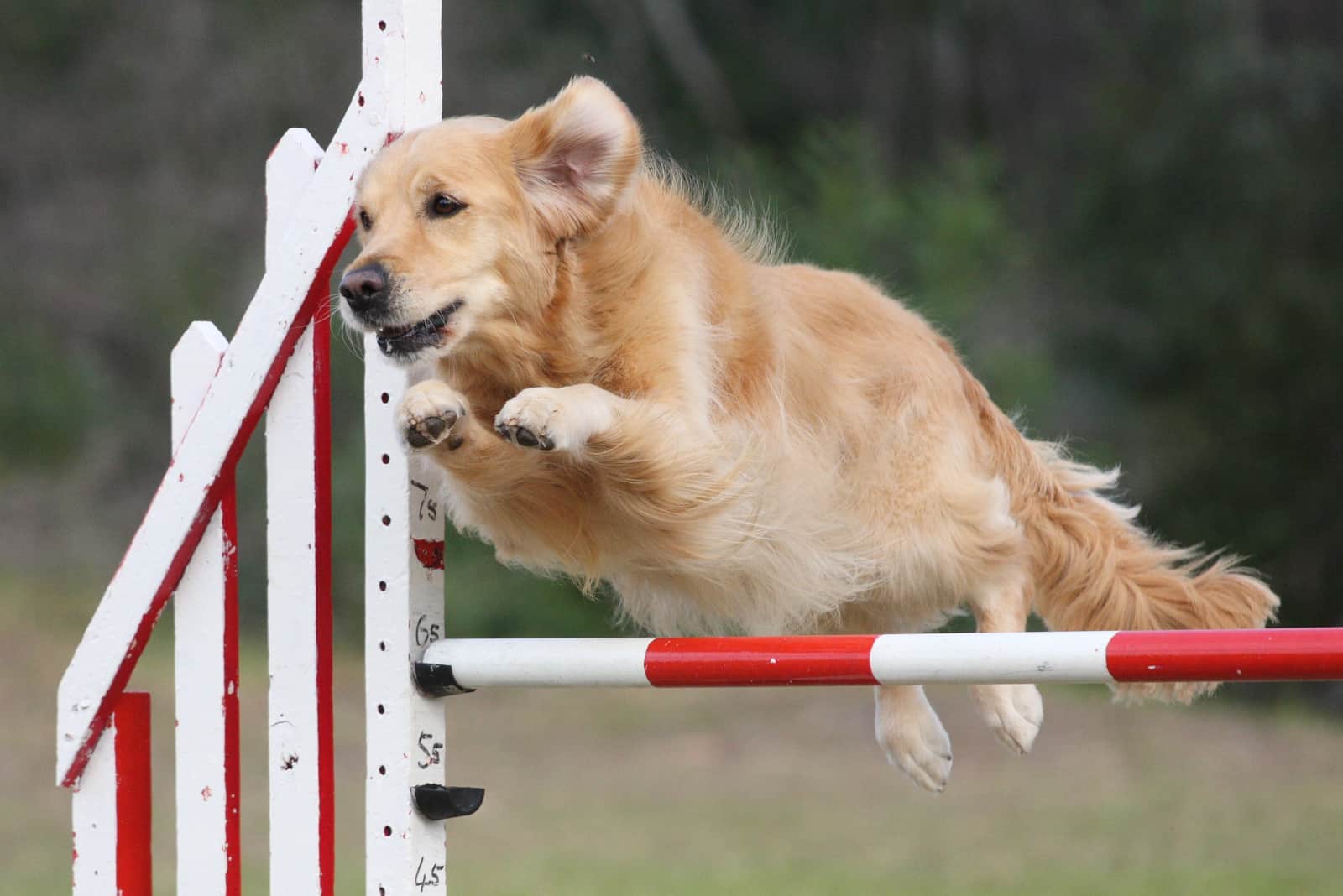
Golden Retrievers are usually top performers in obedience and agility rings. They do amazingly well at a variety of sporting competitions, like field trials, dock-diving, flyball, and rally obedience.
Field trials are outdoor competitions that test the hunting ability of domestic dogs. There are different kinds of trials; some are designed for retrievers, and some, for pointing or flushing dogs.
In Retriever Field Trials, dogs compete against one another to earn the Field Champion title. To become the champion, a dog needs to find and retrieve a shot mark in a large open area as quickly as possible while responding to signals from its handler.
They’re judged based on their memory for marks, response to direction, intelligence, and perseverance.
If you’d like to enter your dog in one of these competitions, you’ll first need to join a Field Trial Society. Your dog will also need a lot of training even if it does come from a good working line, so be prepared for some hard work.
If you’d like to check out your Golden Retriever’s hunting ability in a non-competitive environment, then a hunt test is a better option. The first hunting tests were held in 1985, and from then on, they became a popular way of assessing how well dogs perform while retrieving tasks in different conditions.
For people with high-energy pups that never seem to get tired of running around and playing, trying out dog sports might be a fun hobby.
With their inborn love of water and their active personality, Golden Retrievers are perfect for dock diving.
Here’s how it works: You throw your dog’s toy into the pool, he runs along the dock on your command, jumps into the water, and grabs it. It’s easy enough to practice if you’ve got access to a pool, lake, or the sea.
Another fun activity you can share with your furry athlete is flyball. It’s a dog sport played in teams of four, so you’ll first need to find a team that’s comfortable with both you and your pup.
Dogs run in relay, competing against each other through a course set up with different obstacles. What makes it so popular is the fact that it’s suitable for all dogs regardless of their breed.
Training a Golden Retriever

Being the smart pups they are, Golden Retrievers are very easy to train. They love having something to do, especially if it pleases their owners, so they pick up new tricks very quickly.
Positive reinforcement training methods are the way to go when shaping your dogs into good boys and girls. All you’ll need is some patience, lots of toys, and high-quality treats.
Whether you’re teaching them basic obedience or you’re preparing them to win a title in one of the sporting competitions, these intelligent, friendly dogs won’t disappoint you.
In fact, the first three dogs to ever win the AKC Obedience Trial Championships were Golden Retrievers. It’s no wonder they’re fit for many professional jobs as well, from detection work to search and rescue.
Goldens are considered to be fully grown by the time they reach two-and-a-half years of age. It’s always best to start early when it comes to training, but you’ll need to plan your training sessions according to their age.
From puppyhood to adulthood, they’ll go through a few training milestones.
Before you bring home a Golden Retriever puppy, you should prepare to take on the first stage of training, which will last until they’re about six months old.
The obvious thing you’ll need to do when your puppy starts living with you is potty training. Be understanding if they don’t get it from the start… they’re still young. Cleaning a few messes here and there is nothing too troublesome considering the love you’ll get in return.
The other thing future owners need to be aware of is that puppies bite… it’s simply in their nature. Instead of trying to stop it, it’s better to get them enough chewing toys if you don’t want them to destroy your house.

Photo from @taras.the.working.golden
The most important thing that all dogs need is proper socialization. Getting your dog used to other dogs, people, and scary objects will prevent future bad behaviors.
It’s believed that the socialization period lasts until three months of age, so take your puppy around with you and let it meet the world in the safety of your presence.
Once you’ve got the fundamentals down, you can start teaching your pooch some basic obedience commands. These include focus, sit, down, stay, leave-it, quiet, and come.
Don’t be surprised if the lovely pup starts misbehaving at about eight months of age… he just got into puberty. We’ve all been through it once, and we know how exhausting it must have been for our parents. Dogs are no different… during adolescence, they test their boundaries.
Don’t worry; it will pass in no time. Just keep the obedience training going, along with further socialization.
All of this will ensure they’re well-behaved, friendly dogs by the time they become adults.
However, if you’ve adopted an adult dog that has already developed some behavioral issues, these can also be corrected. It can be easier or harder depending on what the problem is. The first step is finding the reasons behind these problems.
For example, a good way to deal with fear-based behavior is through desensitization and counter-conditioning.
Whatever the problem is, just don’t give up… hard work and patience will surely pay off.
Is the Field Golden the right choice for you?
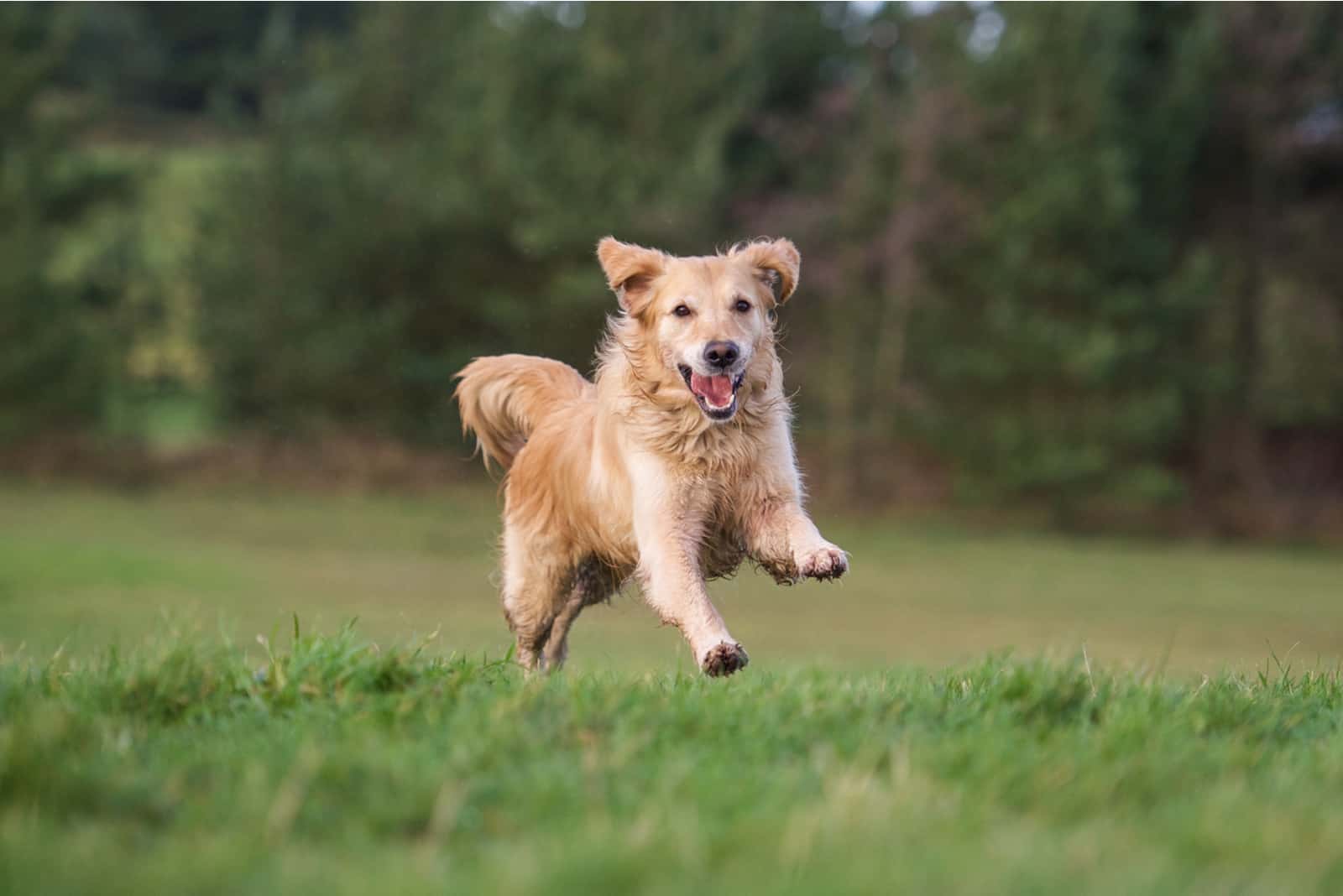
Deciding between a Field and a Show Golden depends on your preferences and needs.
If you’re looking for a capable hunting partner or a sporting buddy, then the field-bred type is a better choice. On the other hand, if you just need a lovable furry friend to keep you company, then the Show Golden is the perfect dog for you.
Both dogs make great family pets, though the field types can be rougher. That’s something you’ll need to take into consideration, especially if they’re going to be around young children.
These pups are also very active and playful, which means they need a lot of exercise. That’s what makes Goldens excellent companions for people with active lifestyles.
Your decision might also be influenced by their appearance. The field-bred dogs have a lean, compact build, while the show dogs are larger.
Their coats differ as well… the show types are fluffier in comparison to the field types. They’re also typically of lighter color.
Getting your puppy from a reputable breeder rather than from a puppy mill will give you an insight into what its parents are like. That way, you’ll know what to expect, so you can be better prepared to take care of your new family member.
Whatever your decision is in the end, either of these pups will definitely make your life happier and more eventful.
Read Next: Mini Golden Retriever: A Purebred Or A Crossbreed?

















